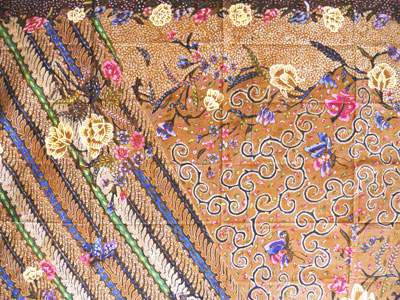A History of African Wax Prints
You may have heard them referred to as ‘African wax prints’ or ‘tribal’, but what you may not know is that the fabrics are usually neither made in Africa nor designed by Africans. They are actually European-made textiles certain African countries have embraced and made their own.
In sales and marketing vernacular, ‘African print’ is a general term used to identify a category of textiles using 100% cotton fabric in vibrant colors, which are printed by machine using wax resins and dyes so that they have a batik-like effect on both sides of the fabric. The method is called wax-resist dying because the wax ‘resists’ the dye from penetrating the entire cloth, which is how patterns are made. It also goes by the names of super wax, java, and Ankara, with ‘wax’ named fabrics having a somewhat glossy, stiff, waxy feeling surface even though they are roller printed.
It Started in Indonesia
What today is often referred to as Ankara originated in Indonesia as batik. Batik uses an etching tool called a canting that holds a small amount of hot, liquid wax that allows for intricate patterns to be made on cloth. Today the UN has recognized it as a preserved intangible cultural heritage of humanity.
This short, beautifully detailed video, used with the permission of our friends at Color Island, easily breaks down the process for you to see. The takeaway is how painstakingly intricate the handmade designs are, and to imagine the length of time it takes to make one cloth:
As an art form, the method is ancient. The Egyptians used batik to decorate the cloths mummies were wrapped in in the 4th century BC. It was thought that the Javanese started using the technique in the 6th century and since then the practice has been at its highest level there. Some say it came to Indonesia from India or Sri Lanka, though there is evidence of non-Hindu communities in the area using it then as well.
The colonial era of Europeans in Indonesia made its biggest impact in the 18th and 19th centuries. Batik was popular with Christian missionaries who used it to cloth converts to the church. Western African soldiers also brought back beautiful Javanese fabrics to their wives after serving in the military in the Dutch East Indies between 1810 and 1862.
At the same time, the Dutch and English saw the opportunity for mass production of these fabrics back home in Europe by using new machinery to automate the dying process. This is where the term ‘Dutch wax’ and ‘wax hollandaise’ originated from, since the prints’ predominant country of origin became Holland.
How Batik from Indonesia Became Popular in sub-Saharan Africa
With the large landmass of Africa between the European mills and their Indonesian destination, the boats made stops along the way to refuel, purchase supplies, and sell their fabrics to the West African communities at the ports. Over time they learned their fabrics were more popular in sub-Saharan Africa than in Indonesia, so colors and designs began to adapt to the African preferences to cater to the tastes of this new market.
Image By CIA - The World Factbook [Public domain], via Wikimedia Commons
The mass-produced European batik-inspired clothes failed in Indonesia because the method gave the prints a particular ‘crackle’ effect from dye bleed which cheapened the look to the Javanese who preferred their handmade products. To West Africans, however, this was a new, beautiful fabric with no comparison, and they took to it quickly.
Today’s African wax print designs include pop culture and art references, everyday items like books, and geometrical patterns. Markets around sub-Saharan Africa are full of shops selling both legal and illegal Chinese and Nigerian copies that bring lower costs to the shopkeepers, but also lower quality to the customers. Shops see these versions as allowing them a better profit margin, though it’s a second generation away from the original batik inspiration.
Making Ankara truly African through Storytelling
Prints have the ability to communicate. While they come from a combination of Javanese, Indian, Chinese, Arab and European artistic traditions, they speak to people in the language of the shopkeeper. For you see, back then it was the sales artistry of the fabric store owner that could create a background and story to any print, localizing it to resonate with her customers’ beliefs, traditions, and desires. Today the customers give the designs their meaning.
For instance, a print of a fan that was designed in Holland can become representative of a fictional story that, when repeated enough, becomes true. It can become the tale of a hot, dry, dusty African night in which the two protagonists, a man and a woman, eat, laugh, and dance until from exhaustion they fall asleep under a tree in each other’s arms, having shared the first of many wonderful nights together. Could the fan be representative of its wearer being in a happy relationship?
Instead of European mills making patterns that are ascribed meaning once they reach the shops in Africa for sale, to become more truly African the designs could purposefully be more reflective of sub-Saharan Africa’s culture.
Breathing life into textiles and connecting them to hopes, dreams, politics and everyday life is what gives them context and makes them stand out. Intentionally creating textiles that are reflective of these everyday topics, would allow fabrics to authentically reflect their communities instead of communities creating tales of how they are reflected in them.
More interesting reading on African batik prints can be found on the following pages:
- http://beyondvictoriana.com/2011/04/10/african-fabrics-the-history-of-dutch-wax-prints-guest-blog-by-eccentric-yoruba/
- http://www.shopglobalmamas.com/Info/HistoryAfricanBatik






